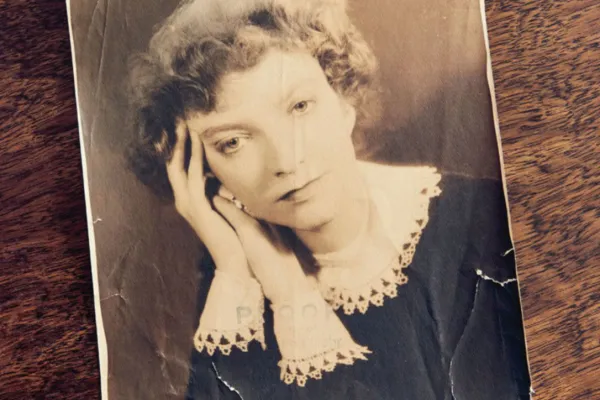14 Things to Know About Madeleine L’Engle’s Life and Legacy
Alum News

Published June 14, 2018
1. L’Engle, born November 29, 1918, was the only child of artistic parents. Her mother, Madeleine Bennett Camp, was a pianist, and her father, Charles Wadsworth Camp, was a critic, writer and foreign correspondent.
2. At age 12, L’Engle moved with her parents to the French Alps and attended an English boarding school. She returned to the U.S. in 1933 and spent her high school years at a boarding school in Charleston, South Carolina.
3. As a child, L’Engle entered a poetry contest in school and won; however, her teachers didn’t believe she had written the prize-winning poem, so her mother went to school the next day carrying a stack of her daughter’s stories and poems to prove her talent.
4. L’Engle, an English major at Smith, always described herself as an average student (“I’m not an intellectual, I’m instinctual,” she once said), but her grade card shows that other than a D in German she received a steady stream of A’s and B’s in subjects ranging from English to philosophy and music.
5. At Smith, L’Engle had the nickname “Tony Camp.” Perhaps the first time she signed her name “Madeleine L’Engle Camp” was on a poem, “The “Gates of Heaven,” in the November 1939 issue of Smith’s magazine The Tatler.
6. For L’Engle, the key to writing was listening. “Stories spoke to her,” says granddaughter Charlotte Jones Voiklis. “She didn’t outline things. If she had an idea, she let the story talk to her.’”
7. A Wrinkle in Time almost did not make it to the page. There was a period throughout her 30s when L’Engle wasn’t being published. Fearing more rejection, she vowed to give up writing by her 40th birthday. Then, during a family road trip, she dreamed up the idea for her most famous work and kept writing. The rest is history.
8. L’Engle credits Smith professor Esther Cloudman Dunn’s courses in 17th-century literature and Shakespeare for teaching her the techniques of writing fiction.
9. Since its publication in 1962, A Wrinkle in Time has sold more than 10 million copies and has inspired at least two movies: a made-for-television version in 2003 and this year’s big-screen adaptation directed by Ava DuVernay.
10. A Wrinkle in Time is No. 22 on the American Library Association’s list of the 100 most banned books for its depiction of fantasy and religion. In 2001, L’Engle told The New York Times, “It seems people are willing to damn the book without reading it. Nonsense about witchcraft and fantasy. First I felt horror, then anger, and finally I said, ‘Ah, the hell with it. It’s great publicity, really.’”
11. L’Engle returned to Smith as Commencement speaker in 1977. She encouraged graduates to mend the “brokenness” of the world. “That’s asking a great deal of you,” she said, “but I do ask it, because women are uniquely gifted as healers.” Four years later, in 1981, she received the Smith College Medal.
12. For nearly 30 years, L’Engle was a librarian and writer in residence at the Episcopal Cathedral Church of St. John the Divine in New York City.
13. In 2004, President George W. Bush awarded L’Engle the National Humanities Medal. She was cited for works that “reflect the creative spirit of America.”
14. A Wrinkle in Time is the first of a quintet of books: A Wind in the Door, A Swiftly Tilting Planet, Many Waters and An Acceptable Time. Beyond that, L’Engle authored more than 60 books. Among them: The Love Letters, A Circle of Quiet, The Arm of the Starfish and A Severed Wasp.
Learn More
The Making of Madeleine L’Engle
Before she wrote A Wrinkle in Time, the late author, class of 1941, developed a literary ambition that drove her to aim for the stars, and to not give up. That’s one insight awaiting scholars when her extensive papers come to Smith.
‘Tale of a Smart, Awkward Misfit’
Madeleine L’Engle’s A Wrinkle in Time has influenced generations of readers with its mix of adventure, science fiction, spirituality, family devotion—and a memorable heroine. Alumnae tell us it opened their hearts and minds to unimagined possibilities and quite literally changed their lives.
Stories We Carry With Us
Intelligence, high-moral values and an expansive imagination infuse the writings of Madeleine L’Engle ’41. In honor of her centenary year, and with the release of a heralded new film of her signature book, we asked four alumnae writers to consider her influence in their lives.